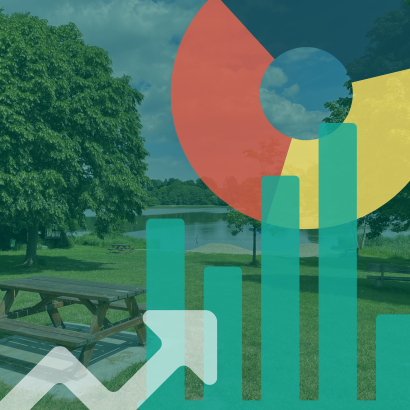
There is no question that the field of parks and recreation has become increasingly data-driven. While not everyone in our field is involved in data collection, analysis, visualization and/or storytelling, we are all becoming more dependent on data to guide, inform and justify our work. Thus, we should perhaps embrace the use of data to advance parks and recreation in the same ways that we have grown accustomed to relying on data-driven devices like smartphones, fitness trackers and global positioning system (GPS) navigation in our daily lives.
Thanks to the National Recreation and Park Association (NRPA), we now have access to a wide variety of data sources and studies that document and demonstrate the importance, value, and benefits of parks and recreation. Examples that immediately come to mind include the NRPA Park Metrics, Data and Mapping Resource Library and Park Pulse Surveys. While data collection and analysis are certainly important, we must also be intentional and thoughtful in how we present and tell our stories using data.
Data Visualization
Data visualization is the graphical representation of information and data through the use of common graphics, such as charts, plots, infographics and animations. These displays of information are used to communicate complex data relationships and data-driven insights in a way that is easy to understand. I recently read an article by Charles Mahler, which discusses seven helpful practices for data visualization including:
- Have a goal in mind.
- Choose the right visualization tool.
- Choose the right type of visualization.
- Use succinct labels and titles.
- Choose the right colors.
- Avoid clutter and unnecessary elements.
- Use data that is clean and up to date.
Mahler also offers some criteria for good data visualizations which I try to incorporate into my own work:
- Show complex data connections in a way that is easy to understand, clear, concise and clutter-free.
- Enable our audience to quickly grasp the key points you are trying to communicate.
- Effectively communicate the information and ideas in the data using the right visual elements.
- Consider the needs of various audiences, while being accessible by using clear and legible fonts and text sizes.
- Be simple and straightforward without unnecessary elements or distractions.
- Be based on accurate, current and reliable data.
For good examples of data visualization in parks and recreation, I suggest taking a look at NRPA’s Park Pulse Surveys and how the survey results are presented and summarized in infographics, charts, etc. Another example is how the Los Angeles County Department of Parks and Recreation (DPR) presents the key findings of its 2016 and 2022 Parks Needs Assessments in maps, graphs and infographics in fact sheets, executive summaries and final reports.
For anyone interested in learning how to prepare more effective data visualization, I also recommend “Better Data Visualizations: A Guide for Scholars, Researchers, and Wonks” by Jonathan Schwabish. This book details essential strategies to create more effective data visualizations, offering more than 500 examples to demonstrate the do’s and don’ts of data visualization.
Data Storytelling
Data storytelling refers to the ability to effectively communicate insights from data using narratives and visualizations. When done right, it can be used to put data insights into context for — and inspire action from — our audience, especially decision-makers. Data storytelling has three key components:
- Data: Thorough analysis of accurate, complete data serves as the foundation of our data story. Analyzing data using various approaches and methods enables us and our audience to understand its full picture.
- Narrative: A verbal or written narrative, also known as a storyline, is used to communicate insights gleaned from data, the context surrounding it, and actions we recommend and aim to inspire in our audience.
- Visualizations: Visual representations of our data and narrative can be useful for communicating its story clearly and powerfully. These can be in the form of charts, graphs, diagrams, pictures or videos.
We often hear the expression that “numbers speak for themselves.” Having been a planner for more than 20 years, I have learned from experience that this is not necessarily true. I have worked on numerous projects involving the collection and analysis of a high volume and variety of data and found that it takes time, effort and skills to make sense of, present and communicate insights from data. With a desire to become a better data storyteller, I recently completed an online course called “Communicating Data Through Storytelling,” which I found very helpful and thoroughly enjoyed.
For those interested in learning more about data storytelling, I recommend reading this article by Beth Stackpole, as well as the books “Effective Data Storytelling” by Brent Dykes and “Persuading with Data” by Miro Kazakoff.
Final Thoughts
In a blog post last year about telling our stories, I offered the following thoughts:
“We must consistently and persistently make the case for parks and recreation, especially to decision-makers who author legislation, develop policies, and make funding decisions at all levels of government that impact park agencies and the amount of resources allocated to them. We need to be prepared to present information about the value of parks and the benefits they offer locally, regionally and nationally.”
To effectively share and inform others about the value of parks and the wide range of benefits they offer, we must continually improve our skills in data visualization and storytelling.
Clement Lau, DPPD, FAICP, is a Departmental Facilities Planner with the Los Angeles County Department of Parks and Recreation.


